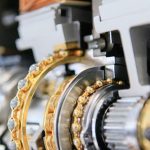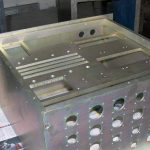
In order to obtain a clear polishing effect for plastic molds, it is important to have sufficient polishing tools and auxiliary products, such as oilstone, sandpaper and diamond abrasive paste. The choice of polishing procedure should change the surface condition after pretreatment (such as machining, EDM, grinding, etc.).
1. Toss
After grinding, EDM, grinding and other processes, the surface can be polished by a rotating surface polisher or an ultrasonic grinder at a speed of 35000-40000 rpm. The commonly used method is to use a grinding wheel (WA#400) with a diameter of Φ3mm to remove white electricity. The general order of use is #180〜#240〜#320〜#400〜#600〜#800〜#1000. Many moldmakers choose to start with #400 to save time.
2. Half precision throw
The number of sandpaper is: #400~#600~#800~#1000~#1200~#1500. In fact, #1500 sandpaper only uses hardened die steel (above 52HRC), and is not suitable for pre-hardened steel because it may cause burns on the surface of pre-hardened steel.
3. Free throw
Diamond polishing paste is mainly used for fine polishing. If the polishing cloth wheel is mixed with diamond abrasive powder or abrasive paste for polishing, the usual polishing order is 9μm(#1800)~6μm(#3000)~3μm(#8000). 9μm diamond abrasive paste and polishing cloth wheel can be used to remove the hair-like wear marks left by #1200 and #1500 sandpaper. Then use sticky felt and diamond paste for polishing, the order is 1μm(#14000)~1 /2μm(#60000))~1/4μm(#100000).
The polishing process with an accuracy requirement of 1μm or higher (including 1μm) can be carried out in the clean polishing room of the mold processing workshop. After several hours of work, the resulting high-precision polished surface may be scratched.
Link to this article:What is the general process of mechanical polishing of plastic molds?








